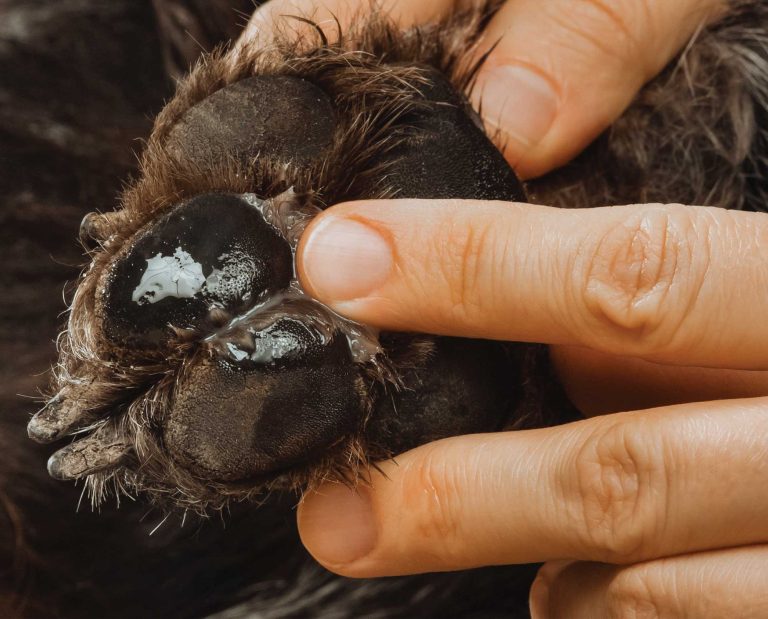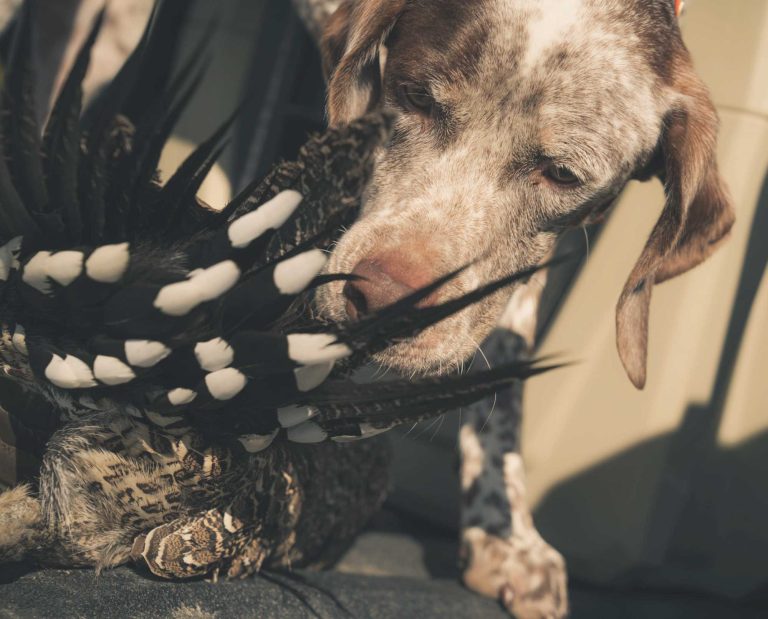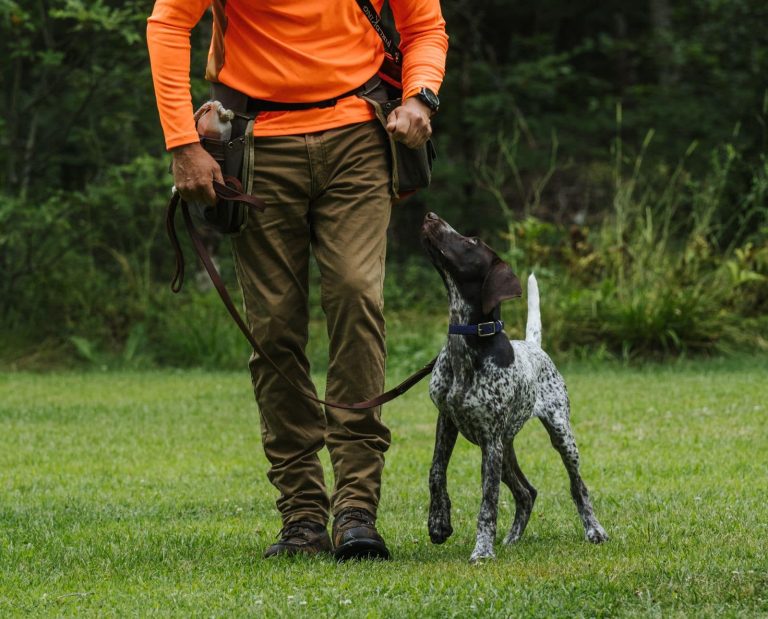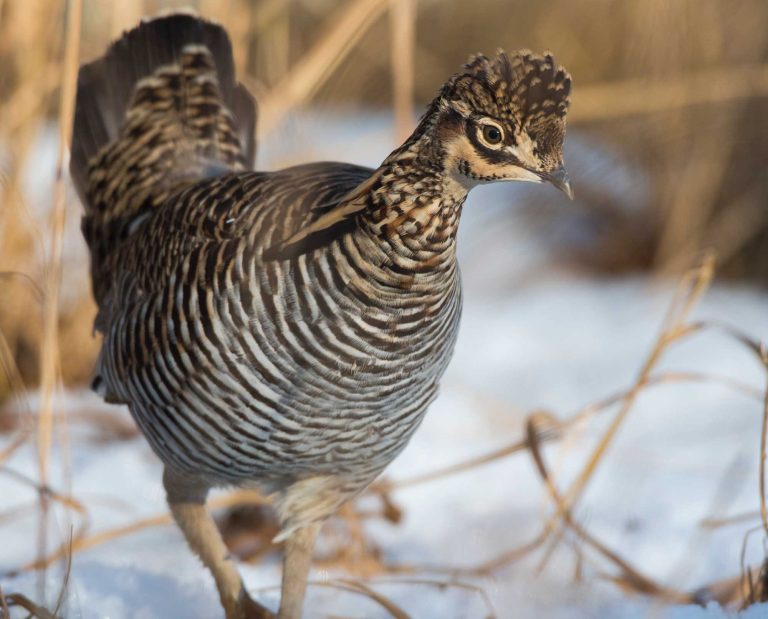Saving the Wirehaired Pointing Griffon In America
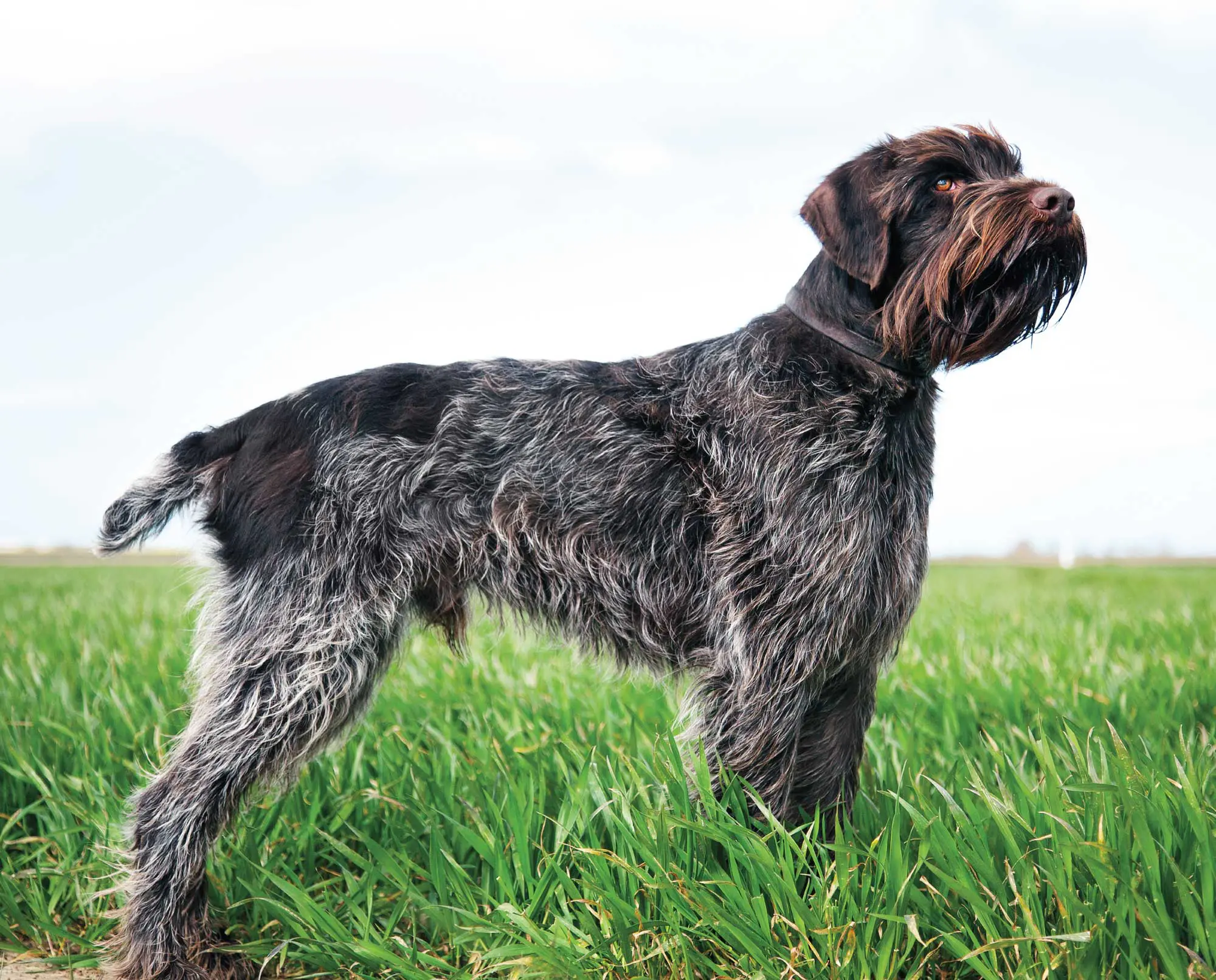
In attempts to save the Wirehaired Pointing Griffon in America, breeding ideologies split clubs and Griffon lineages.
The first Wirehaired Pointing Griffon arrived in the United States in 1887. Despite the breed’s early start in America, it has always played a minor role on the gun dog scene. Unlike the Brittany and the German Shorthaired Pointer (which coincidentally were promoted by some of the same individuals who imported some of the first Wirehaired Pointing Griffons), the Griffon never really caught the attention of mainstream hunters and field trialers in the United States or Canada.
This breed’s struggle in America led to some breeders using Český Fousek stock to revive it.
Wirehaired Pointing Griffon History in America
A Griffon breed club was formed in the U.S. in 1916. The breed managed to gain some notoriety in the 1920s and ’30s. But the Second World War dealt it a hard blow, and the club folded.
Interest rekindled in the 1950s. Soon, there were enough Griffon breeders and enthusiasts in the United States to form an American Kennel Club (AKC)-affiliated breed club: the Wirehaired Pointing Griffon Club of America (WPGCA).
By using original stock brought to the U.S. before the war as well as imported dogs from France and Germany, WPGCA progressed toward developing solid hunting lines. However, without a formal breeding program, and no tests or trials to evaluate their dogs, it was slow going.
Even when the club established its own testing and breeding program in the 1970s, the situation did not really improve. There were still too many dogs from untested and unproven parents being bred in the U.S. In spite of a few outstanding individuals, the overall quality of the breed remained uneven.
By the 1980s, club members were sounding the alarm. The breed was in deep trouble, and something had to be done. Breeders had only three options: use the remaining good dogs, import Griffons from France or Germany, or use “foreign” blood.
As we shall see, all three ways were attempted, but not without some heated debate. Breeders’ choices eventually led to deep divisions in the breed that remain to this day.
Saving The Breed
On one side of the divide were breeders who chose a combination of the first two options. They felt they could improve the situation by using dogs already in North America and imported dogs from Europe. They have made tremendous progress in the last 30 years. Today, they are producing bird dogs that are the equal of any other versatile breed.
Many of these breeders are members of the American Wirehaired Pointing Griffon Association (AWPGA), a club formed by members of the original club who disagreed with a controversial crossbreeding program. In 1991, the AKC formally recognized the AWPGA as the breed’s parent club in the U.S.
On the other side of the divide were members of the original club, the WPGCA, who chose the third option. After much debate they decided to embark on a crossbreeding program involving the Český Fousek, a wirey pointing breed from the Czech Republic.
In her book Griffon: Gundog Supreme, author and club member Joan Bailey explains the circumstances that led to the decision:
“In 1983 we held our annual board of directors meeting in conjunction with the field test in Redding, California. …Early in the meeting someone asked: “What females do we have for breeding?” The answer was “Few to none”…we faced the problem squarely. We acknowledged that there are only three ways to rejuvenate a failing breed…It was agreed that we had tried the first two methods over and over without lasting results. We accepted the fact that the only way to save the Griffon was to inject ‘foreign blood.'”
Integrating the Český Fousek
The club chose the Český Fousek in part because, like Eduard Korthals, its members felt that all rough-haired pointing dogs were of the same family. They claimed that Fousek breeders in the Czech Republic had actually used Wirehaired Pointing Griffons after the Second World War to revive their breed and therefore felt that using the Fousek to revive the Griffon was not nearly as extreme a step as breeding to another breed like the German Shorthaired Pointer.
The first Griffon-Fousek pups were born in 1986. More litters followed. The results were generally positive and the club decided to continue with the program. Eventually, however, since breeders no longer had access to the Korthals’ Wirehaired Pointing Griffon breeding stock and used mostly Český Fousek stock since 1985, members decided to rename the club and officially convert to representing the Český Fousek breed (Bohemian Wirehaired Pointing Griffon) in North America. Today, the club is known as Český Fousek North America.
Selecting American-bred Griffons Today
The bottom line for any North American hunter seeking a Griffon is to understand that there are options. Good-to-excellent hunting dogs are available from breeders on both sides of the divide and the differences in the dogs’ looks and performance are, for the most part, fairly minor. Therefore the first step in getting a good Griff pup should be to do some homework and find a breeder, breed club, and breeding philosophy that you agree with.
In addition, prospective owners should be cautious of the increasing numbers of Griffons being bred for the show ring and companion animal market without much regard for their hunting abilities. Bill Jensen, one of the most experienced Wirehaired Pointing Griffon breeders in North America, offered his opinion on the matter:
“I am very concerned with the division into show and field types. It has happened to most of the working breeds, and Griffs are now in the process. It’s an evil outcome of the free enterprise system. Bench shows should test that the dogs will point. How else will they know that they are Wirehaired Pointing Griffons?”




